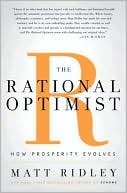The Mauryan empire in India seems to have harvested the prosperity of the Ganges valley to combine an imperial monarchy with expanding trade. It was ruled at its zenith in 250 BC by Asoka, a warrior who turned into a Buddhist pacifist once he had won (funny, that) and was as economically benign a head of state as you could wish. He built roads and waterways to encourage the movement of goods, established a common currency and opened maritime trade routes with China, south-east Asia and the Middle East, sparking an export-led boom in which cotton and silk textiles played a prominent part. Trade
...more
Welcome back. Just a moment while we sign you in to your Goodreads account.


